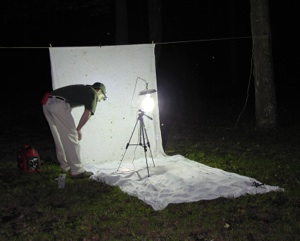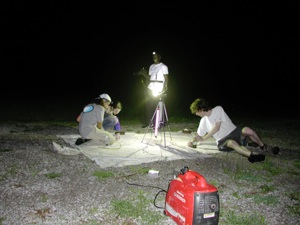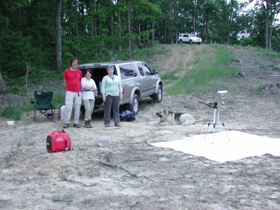UV&Mercury Vapor Lights

Most Coleopterists will agree that the use of ultraviolet lights has revolutionized the collecting of beetles. The results of collecting at lights under favorable conditions has to be experienced to appreciate its effectiveness. Much has been written as to the biology behind the attraction to UV lights held by a wide range of taxa including beetles, but with limited space given here will not be dealt with. Trust in the fact that it works and should be a routine in the coleopterist’s arsenal of collecting methods. Beetles are attracted to varying degrees to ultraviolet, mercury vapor, and incandescent lights. Most coleopterists utilize either ultraviolet (black light) or mercury vapor or a combination of the two. The author favors a combination set-up of a mercury vapor light (175 watt bulb and ballast) mounted on a tripod and a black light bulb hung from the same tripod (see figures below). A portable generator operates the mercury vapor light and the black light comes in either AC or 12 volt DC. The DC lights allow set-up in remote areas by utilizing a 12 volt battery. The author prefers a deep cycle battery particularly when using


175 watt mercury vapor light set up with tripod and suspended sheet between two trees.
Same set-up as previous photo with sheet placed on the ground. This has the distinct advantage when there are no trees to tie off a rope to hang a sheet or during windy nights.
Ohio Coleopterists set-up for a night of beetle collecting. Shawnee State Forest 2011.

BioQuips UV Bucket Traps. These traps are great for setting up in remote areas and allow the collection of beetles from several different habitats on the same night. Deep Cycle batteries provide sufficient power to run a 22-watt UV Bucket Trap for 16-24 hours without a recharge. This amount will vary depending on the wattage of the light and quality of the battery you are using. BioQuip offers 22-watt and 12-watt UV Bucket Trap configurations.
